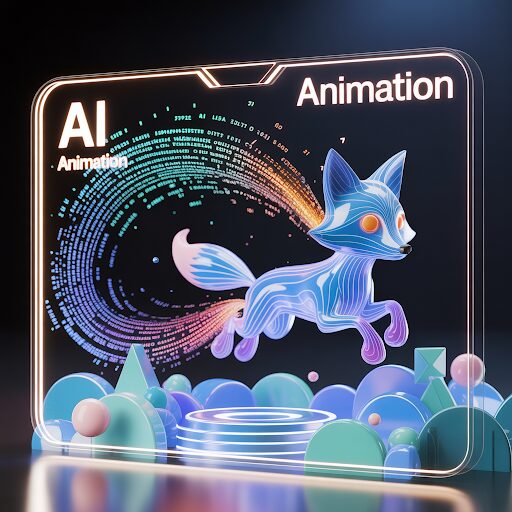How AI Is Shaping the Future of 3D Animation Services

3D animation services aren’t just evolving but transforming at full throttle. It’s not just about sharper renders or smoother transitions anymore. The real shift is powered by a force that’s rewriting rules across industries: Artificial Intelligence.
At a time when deadlines are tighter, expectations are soaring, and brands demand faster delivery without compromise, AI doesn’t just fit into the 3D animation pipeline; it’s becoming the backbone of it.
AI-Driven Advances in 3D Animation Services
The animation industry has always balanced art and technology. Now, AI is tilting the balance in favour of intelligent automation.
Traditional 3D animation services involved hours of manual keyframing, modeling, and refining, a slow, laborious process. AI has stepped in to fast-track these repetitive tasks, allowing creative professionals to focus more on storytelling and visual impact.
From Frames to Intelligence
AI algorithms can now analyze motion data, predict animation patterns, and generate realistic movements with minimal manual input. Motion capture used to take days of rigging and adjusting. Now, AI reads the data and adapts it in real-time, producing high-quality sequences in a fraction of the time.
Studios offering 3D animation services are adopting AI-based rigging tools that simplify skeletal setup and automate facial animations with astounding accuracy. Tools like RADiCAL or DeepMotion are already creating waves, letting animators skip repetitive groundwork and jump straight to creative refinement.
Text-to-Animation is a Huge Shift
Text-to-image was just the beginning. Now, with tools evolving to generate animated 3D assets from simple prompts, the industry is seeing the start of an interface shift. These innovations are feeding directly into modern 3D animation services, reducing dependency on manual modeling or character design.
An animator can now input a few descriptive lines, and AI tools will generate a model and a basic animation, all editable and all scalable. This allows indie creators, marketers, and the biggest animation companies to scale projects without proportionally scaling timelines or team size.
AI-Powered Systems Offer More than Just Speed
Yes, AI saves time. But the real edge lies in smarter pipelines. AI systems now assist in lighting correction, scene optimization, and even automated editing. That’s not just convenience, it’s creative breathing room.
Smart Asset Management
Think of how asset libraries used to work. You’d spend hours looking for that perfect prop or texture. Today, AI categorizes assets, suggests relevant elements based on your project, and can even auto-generate missing components.
3D animation services are becoming leaner and sharper as AI removes friction from the backend processes.
Predictive Rendering Optimization
Rendering is the longest and often most frustrating part of production. AI-enhanced render engines now learn from previous projects, predict bottlenecks, and adjust in real time to avoid unnecessary slowdowns.
AI-based denoisers, for example, can provide near-final outputs in preview quality, drastically cutting down rendering cycles.
The Trend of Personalized Animations
One-size-fits-all content is fading fast. Brands want animations that talk directly to their audience. AI is making that possible. With intelligent data integration, studios delivering 3D animation services can now personalize animations for various demographics without building each version from scratch.
Adaptive Storytelling in Real Time
AI analyzes audience reactions, behavioral data, and engagement metrics. This information feeds into adaptive storytelling tools that alter scenes, character expressions, or camera angles in response to viewer personas. It’s not science fiction, it’s happening now.
Dynamic Voice Sync & Lip Movement
Lip-syncing was once one of the most meticulous parts of animation. But AI voice-sync tools like Replica or Papercup are now generating realistic lip movements based on voice input alone. This allows for multi-language animated content with minimal delay, expanding the reach of 3D animation services globally.
Key AI Impact in 3D Animation Services
Let’s break down where AI is making the biggest difference in practical terms:
- Automated rigging: Saves time on skeletal setups for characters
- Facial motion capture: Captures micro-expressions without hardware
- AI-assisted modeling: Generates base meshes from references
- Intelligent texturing: Applies shaders based on material prediction
- Automated voice-to-animation: Speeds up dubbing and character lip sync
- Scene clean-up tools: Remove rendering artifacts using AI filters
- Storyboarding assistance: Generates layouts based on script prompts
AI’s Role in Client Collaboration
Beyond the animation room, AI is also reshaping how clients interact with studios. Client collaboration is just as important as production, and AI is adding serious value here too.
Faster Client Approvals
AI-generated previews are speeding up the review process. Clients can now see near-final quality drafts within hours, not days. These interactive previews allow frame-by-frame feedback that automatically syncs back with editing tools.
Interactive Pre-Vis Experiences
Instead of sending static storyboards, 3D animation services now offer interactive previews powered by AI. Clients can walk through scenes in real time, suggest changes, and make informed creative decisions before production begins.
Emerging AI Tools for 3D Animation Services
The market is seeing a wave of purpose-built AI tools that integrate seamlessly into animation workflows. These aren’t generic software add-ons; they are specifically tailored for 3D animation services and target common bottlenecks with precision.
Popular AI Tools in 3D Animation
- Runway ML: Used for motion capture and character movement
- Cascadeur: Great for physics-based character posing
- DeepMotion: AI-powered full-body motion capture from 2D videos
- NVIDIA Omniverse: Real-time collaborative 3D production platform
- Ziva Dynamics: For lifelike facial expressions and muscle simulations
Challenges and Ethical Considerations
Every leap comes with its challenges. As AI continues to shape 3D animation services, the industry must tread carefully on originality, ownership, and quality control issues.
Avoiding Overdependence
While AI enhances workflow, over-relying on automation can lead to generic outputs. Balancing AI’s efficiency with a human eye for emotion, nuance, and storytelling depth is crucial.
Creative Credit & Ownership
Who owns an AI-generated asset? Studios must establish clear policies on authorship and client rights when AI plays a major role in content creation. This is still a grey area, but one that 3D animation studios must address proactively.
Final Words
AI isn’t here to take over animation; it’s here to transform how it’s done. It’s not eliminating jobs; it’s changing job descriptions. The future of 3D animation services lies in this powerful partnership between human imagination and artificial intelligence.
Studios that embrace AI aren’t cutting corners; they’re cutting inefficiencies. They focus on emotion, storytelling, and brand expression while AI handles the grunt work.
For businesses and creative professionals alike, the message is clear: the future of 3D animation is not just faster, it’s smarter, sharper, and more dynamic than ever before.

Source: How AI Is Shaping the Future of 3D Animation Services


